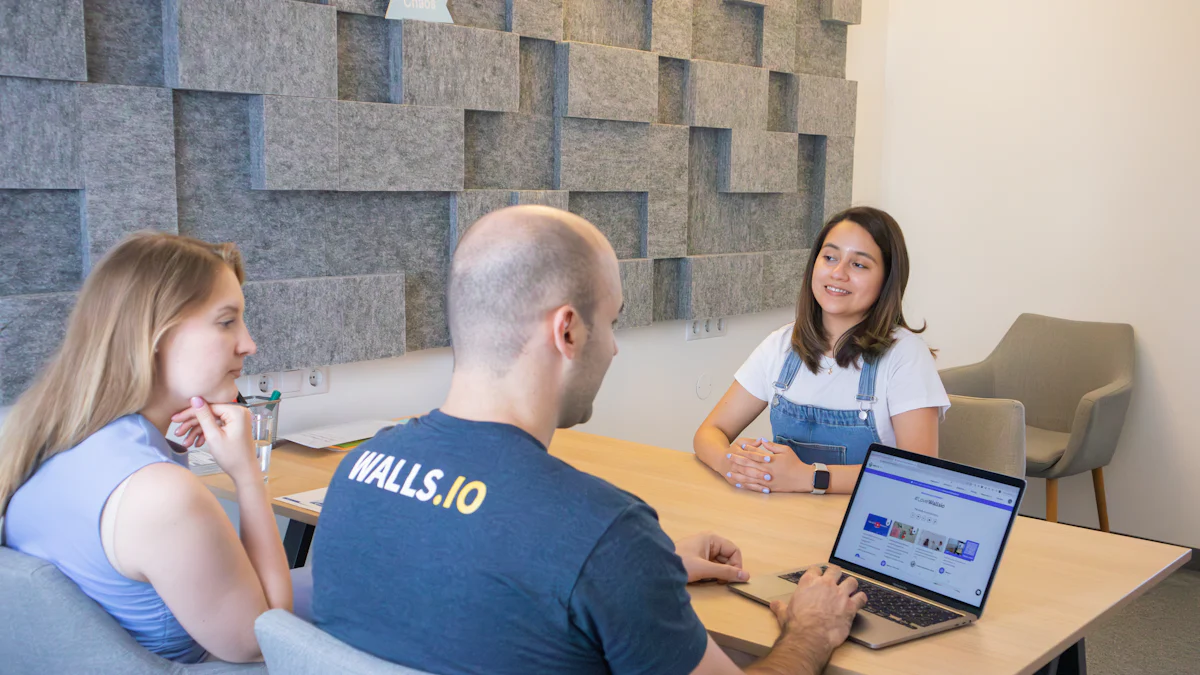Discover the Potential of Indonesian Candidates with Applicant Tracking System

Recruiting the right talent requires more than just reviewing resumes. An Applicant Tracking System helps you measure candidate potential with advanced tools. It uses AI-driven analytics to evaluate skills and predict performance. Skill assessments provide deeper insights into abilities, while keyword matching ensures you identify relevant qualifications quickly. These features allow you to uncover hidden talent that might not stand out on paper. By leveraging this technology, you can make smarter hiring decisions and build stronger teams.
Key Takeaways
Utilize an Applicant Tracking System (ATS) to uncover hidden talent by leveraging AI-driven analytics and skill assessments.
Focus on candidate potential, which includes adaptability and problem-solving skills, to build a strong and loyal workforce.
Customize your ATS to meet the unique needs of the Indonesian job market, including language support and regional hiring strategies.
Set clear evaluation criteria to standardize assessments and ensure a fair hiring process across all candidates.
Leverage data insights from your ATS to eliminate bias and make informed hiring decisions based on objective factors.
Stay updated on emerging ATS trends, such as mobile accessibility and video interviews, to enhance your recruitment strategy.
Invest in training and development for high-potential candidates to foster long-term growth and innovation within your organization.
Understanding Candidate Potential in Recruitment

Defining Candidate Potential
Defining Candidate Potential
Candidate potential refers to the ability of an individual to grow, adapt, and excel in a role. It goes beyond the qualifications listed on a resume. Potential includes traits like problem-solving skills, adaptability, and a willingness to learn. You can think of it as the untapped capabilities that a candidate brings to the table. Identifying this potential allows you to focus on long-term success rather than just immediate qualifications.
Why Identifying Potential Matters in Recruitment
Recognizing candidate potential is crucial for building a strong workforce. When you hire based on potential, you invest in individuals who can grow with your organization. This approach reduces turnover rates and fosters employee loyalty. It also helps you discover talent that might otherwise be overlooked. By focusing on potential, you ensure that your team remains innovative and adaptable in a competitive market.
Challenges of Assessing Potential Without Technology
Evaluating potential without tools like an Applicant Tracking System can be difficult. Traditional methods rely heavily on resumes and interviews, which often fail to capture a candidate’s full capabilities. Biases can also influence decisions, leading to missed opportunities. Without technology, you may struggle to analyze data effectively or identify patterns that indicate potential. This makes it harder to make informed hiring decisions and find the right fit for your team.
Key Features of an Applicant Tracking System for Measuring Potential
Keyword Matching and Resume Parsing
Keyword matching and resume parsing simplify the process of identifying qualified candidates. The system scans resumes to find specific keywords that match the job description. This feature ensures that you focus on applicants with relevant skills and experience. It eliminates the need to manually sift through countless resumes, saving time and effort. By using this technology, you can quickly identify candidates who meet your requirements.
Resume parsing also organizes information into a structured format. It extracts key details like education, work history, and certifications. This makes it easier for you to compare candidates side by side. The Applicant Tracking System ensures that no critical information gets overlooked during the initial screening process. This feature helps you make more informed decisions early in the hiring process.
Skill Assessments and Testing
Skill assessments provide a deeper understanding of a candidate’s abilities. These tests evaluate technical skills, problem-solving capabilities, and other job-specific competencies. You can use these assessments to measure how well a candidate aligns with the role’s requirements. This approach goes beyond what a resume can show, offering a clearer picture of a candidate’s potential.
Testing also reduces the risk of hiring based on assumptions. It provides objective data that supports your decision-making process. The Applicant Tracking System integrates these assessments seamlessly, allowing you to evaluate candidates efficiently. By focusing on skills, you ensure that your hiring process remains fair and unbiased.
AI-Driven Analytics and Predictive Insights
AI-driven analytics transform how you evaluate candidates. The system analyzes data to predict a candidate’s future performance and cultural fit. It identifies patterns and trends that might not be immediately obvious. This feature helps you uncover hidden talent and make data-driven hiring decisions.
Predictive insights also improve long-term hiring outcomes. They allow you to assess how well a candidate might adapt to your organization’s needs. The Applicant Tracking System uses these insights to recommend top candidates, streamlining the selection process. By leveraging AI, you can enhance the accuracy and efficiency of your recruitment efforts.
Adapting Applicant Tracking System for the Indonesian Market

Unique Aspects of the Indonesian Job Market
The Indonesian job market has distinct characteristics that set it apart from others. It features a diverse workforce with varying levels of education, skills, and experience. Many candidates come from industries like manufacturing, agriculture, and services, which dominate the economy. You will also notice a growing demand for digital and technical skills as businesses embrace technology.
Cultural factors play a significant role in recruitment. In Indonesia, personal connections and referrals often influence hiring decisions. Candidates may prioritize job stability and company reputation over other factors. Additionally, the country’s vast geography creates challenges in reaching talent from remote areas. These unique aspects require you to adapt your recruitment strategies to align with local expectations and realities.
Customizing ATS Features for Local Recruitment Needs
To succeed in the Indonesian market, you need to tailor your Applicant Tracking System to meet local recruitment needs. Start by incorporating language support. Many candidates may submit resumes in Bahasa Indonesia, so your system should handle multiple languages effectively. This ensures you can evaluate all applicants fairly, regardless of their language preference.
Consider adding features that address regional hiring challenges. For example, include tools to source candidates from rural areas or smaller cities. You can also integrate social media platforms popular in Indonesia, such as Instagram and LinkedIn, to attract a broader talent pool. These adjustments help you connect with candidates who might otherwise remain inaccessible.
Focus on cultural alignment when customizing your system. Include options to assess soft skills like teamwork and adaptability, which are highly valued in Indonesian workplaces. By aligning the system with local values, you enhance its effectiveness in identifying the right candidates. Tailoring your Applicant Tracking System in this way ensures it becomes a powerful tool for navigating Indonesia’s unique job market.
Best Practices for Using Applicant Tracking System to Measure Potential
Setting Clear Evaluation Criteria
Defining clear evaluation criteria is essential for effective recruitment. You should identify the specific skills, qualifications, and traits required for each role. Break these down into measurable components to ensure consistency in assessments. For example, if you are hiring for a technical position, include criteria like proficiency in specific software or coding languages.
Use the Applicant Tracking System to align these criteria with your job descriptions. The system allows you to create templates that standardize evaluations across all candidates. This approach ensures that every applicant is assessed based on the same benchmarks. By setting clear criteria, you reduce ambiguity and make your hiring process more objective.
Leveraging Data Insights for Unbiased Hiring
Data insights play a crucial role in eliminating bias during recruitment. The Applicant Tracking System collects and analyzes data from resumes, assessments, and interviews. This information helps you focus on objective factors like skills and experience rather than subjective impressions.
Use the system’s analytics tools to identify patterns and trends in candidate performance. For instance, you can compare assessment scores to determine which candidates meet your criteria. These insights allow you to make decisions based on evidence rather than assumptions. By leveraging data, you create a fairer hiring process that prioritizes merit over bias.
Optimizing ATS Usage for Recruitment Success
Maximizing the potential of your Applicant Tracking System requires strategic usage. Start by training your team to use the system effectively. Familiarize them with its features, such as resume parsing, skill assessments, and AI-driven analytics. This ensures that everyone understands how to utilize the system to its full capacity.
Regularly update the system to keep it aligned with your recruitment goals. For example, adjust the settings to reflect changes in job requirements or market trends. Monitor the system’s performance and gather feedback from your team to identify areas for improvement. By optimizing its usage, you enhance the efficiency and accuracy of your hiring process.
The Future of Applicant Tracking System in Indonesian Recruitment
Emerging Trends in ATS Technology
Technology continues to evolve, and recruitment tools are no exception. You can expect Applicant Tracking Systems to integrate more advanced features in the near future. AI and machine learning will play a bigger role in analyzing candidate data. These technologies will help you predict job performance with greater accuracy. They will also refine how you assess cultural fit, ensuring better alignment between candidates and your organization.
Mobile-friendly platforms will become essential. Many job seekers in Indonesia rely on smartphones for job applications. An ATS that supports mobile access will allow you to connect with a broader talent pool. This feature will make the application process more convenient for candidates, increasing engagement and response rates.
Another trend to watch is the integration of video interviews. Video-based assessments will let you evaluate communication skills and personality traits more effectively. This feature will save time by reducing the need for in-person interviews during the initial stages. You will also see ATS tools incorporating gamification elements. These elements will make skill assessments more interactive and engaging for candidates.
Data security will remain a top priority. As you collect and store sensitive candidate information, robust security measures will protect this data. Future ATS platforms will likely include enhanced encryption and compliance with global data protection standards. These advancements will ensure that your recruitment process remains secure and trustworthy.
How ATS Can Shape the Future of Hiring in Indonesia
An Applicant Tracking System has the potential to transform recruitment in Indonesia. It can help you address challenges unique to the local job market. For instance, you can use ATS tools to reach candidates in remote areas. Features like geolocation filters and online assessments will make it easier to connect with talent across the country.
The system can also promote diversity in hiring. By focusing on skills and potential, you can reduce biases that often influence recruitment decisions. This approach will allow you to build teams that reflect Indonesia’s rich cultural and professional diversity. A diverse workforce will bring fresh perspectives and drive innovation within your organization.
ATS platforms will streamline the hiring process. Automated features will reduce manual tasks, saving you time and resources. You can focus on strategic decision-making rather than administrative work. This efficiency will enable you to fill positions faster, ensuring that your organization remains competitive in a fast-paced market.
In the long term, an ATS will support workforce development. By identifying candidates with high potential, you can invest in training and development programs. This strategy will help you nurture talent that aligns with your organization’s goals. It will also contribute to the overall growth of Indonesia’s labor market by preparing candidates for future opportunities.
An Applicant Tracking System empowers you to measure candidate potential with precision. It goes beyond traditional methods, helping you identify skills and traits that align with long-term success. Tailoring this system to the Indonesian job market ensures it addresses unique challenges, such as language diversity and regional hiring needs. By adopting this technology, you streamline recruitment and uncover hidden talent that drives organizational growth. Take the next step. Explore how these tools can transform your hiring process and position your team for success in a competitive landscape.
From recruiting candidates to onboarding new team members, MokaHR gives your company everything you need to be great at hiring.
Subscribe for more information

